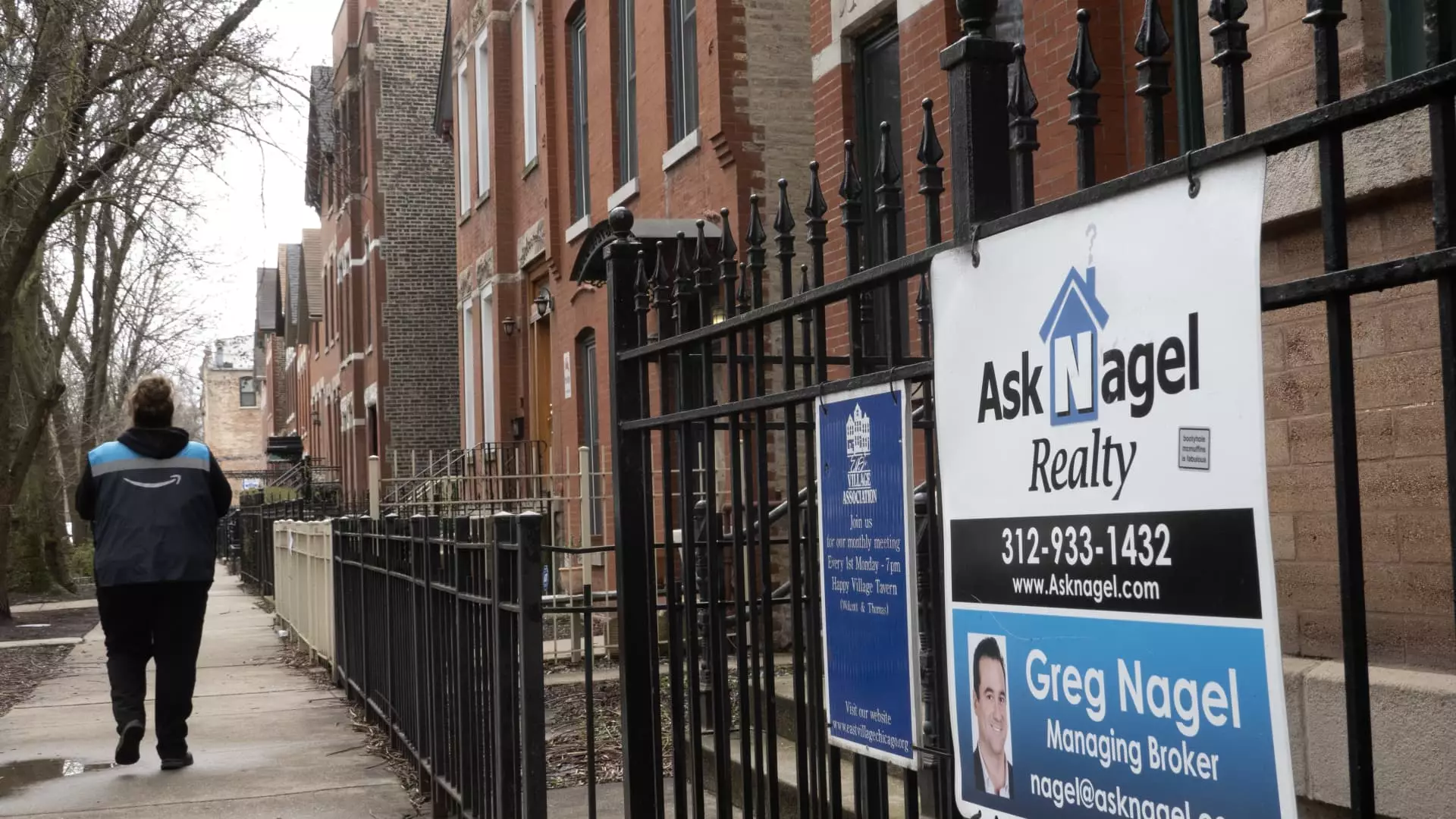The real estate market in June saw a significant drop in sales of previously owned homes, amounting to a 5.4% decrease from the previous month. This decline resulted in a sales pace not witnessed since December, indicating a slow shift from a seller’s market to a buyer’s market. Lawrence Yun, chief economist for the National Association of Realtors, noted that homes are staying on the market for a longer period, with sellers receiving fewer offers compared to previous months. This trend is attributed to an increase in the number of buyers demanding home inspections and appraisals, as well as a rise in inventory on a national scale.
The inventory of homes for sale experienced a substantial jump of 23.4% from the previous year, reaching 1.32 million units by the end of June. While this surge in inventory marks a departure from record lows, it still only translates to a 4.1-month supply. Ideally, a balanced market between buyers and sellers requires a six-month supply of inventory. The current levels are the highest since May 2020, largely due to homes languishing on the market for an extended period. The average time a home spent on the market increased to 22 days from 18 days a year ago.
Despite the influx of new inventory, it has not contributed to a decrease in prices. The median price of existing homes sold in June rose to $426,900, signifying a 4.1% year-over-year increase and reaching an all-time high for the second consecutive month. Notably, sales of homes priced over $1 million saw gains, while the $250,000 and lower range experienced the most significant drop in sales. The supply of homes for sale is particularly weak on the lower end, but a new surge is now evident in this segment. Although the national sales price remains elevated, new listing prices appear to be lower, driven by a surge in smaller and lower-priced listings.
Buyers in the higher-end market segment tend to rely more on cash transactions, with 28% of sales being all cash, an increase from the previous year. Conversely, investors have slightly decreased their activity, now constituting 16% of sales compared to 18% one year ago. However, with the continuous increase in inventory, two possible scenarios could unfold according to Lawrence Yun. Either home sales will increase, or if prices remain stagnant, they may face downward pressure.
The real estate market is experiencing a noticeable shift from a seller’s market to a buyer’s market, as evidenced by the decrease in home sales, an increase in inventory levels, and price dynamics. These trends indicate a potential period of adjustment in the real estate sector, with both buyers and sellers needing to adapt to the current market conditions.

